Posted by Gip of Paso
Started at 6:30 ended at 12:00. We fished by the second light on the south side. Wind was blowing to the north. People were thick. Go catch one of the big dogs like we were getting, and the doubting will stop. I’ve fished this area since the seventies and have never seen anything like the bite that was going on. Go get the biggies, they’re here.
Posted by Danthefisherman
Believe me I know! I had a double hook-up myself. ALMOST landed two simultaneously…almost. Each day they get a little bigger…been going on for about a month with the action really picking up this past week. It appears that most the sharks are about ready give birth soon. That and the future tides say it will only last another week, maybe two. Then maybe we can catch something new. I like the sharks and all, but they don’t fight too well, and seem to “control” the area (can’t catch another species if you tried while they are here). WTG on the 4’8” shark…definitely a big ‘un. Here’s 15 minutes for 4 anglers Thursday night (there were many more anglers, and many more sharks caught…this was 2am and the final “run” for the night)… Here’s my biggest…15lbs 11oz. Setup was an Ugly stick striper paired with an abu5500c3 and 12lb mono (fun but still not much of a challenge).
Date: February 5, 2010; To: PFIC Message Board; From: FishermanDan; Subject: Picture of Spider Crab
The [spider crab] pic doesn’t do it Justice. I think it weighed in at like 7-8lbs!!! (look how big the back two legs are in his grasp) Could be mistaken on the weight though, it was a long time ago. I do remember however that all night this crab was pestering everyone at the right corner Cayucos pier! It was actually snagged 3 times in total. First 2 times it popped off at the surface and while being pulled out of the water. The crab would scamper back out to his “area,” and continue to steal everyone’s bait. At first, we all thought there was a school of fish out there, turned out to be this super aggressive beast of a crab. The third time, I managed to get a net underneath the crab as the angler pictured pulled in the crab, which ate his hook.
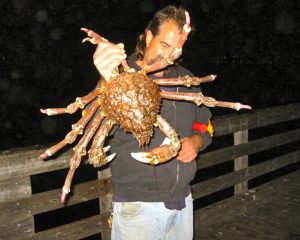
Potpourri — Possibly more than you want to know about the Cayucos Pier
<*}}}}}}}}}>< — Limited fish surveys done by the Department of Fish and Game between 20054 and 2009 give a glimpse into the fish at the pier (numerically) — walleye surfperch, calico surfperch, jacksmelt, silver surfperch, barred surfperch, white croaker, rubberlip seaperch, thornback ray, white seaperch, spiny dogfish and swell shark. If surveys had been done at night the numbers of sharks and rays would be much higher.
<*}}}}}}}}}>< — For years I would get fish reports for my monthly PFIC reports from Glenda who owned the Tidepool that was located near the front of the pier in Cayucos. Of course when I was in town I would stop in to see her. Alas the day came when she said she was selling her store. She was getting married and moving to my home state of Indiana (what a contrast). As a parting gift she donated a ton of prizes that we were able to give away to the kids at out UPSAC Kids Fishing Derbies. She’s missed but life goes on (and we keep in touch on Facebook).
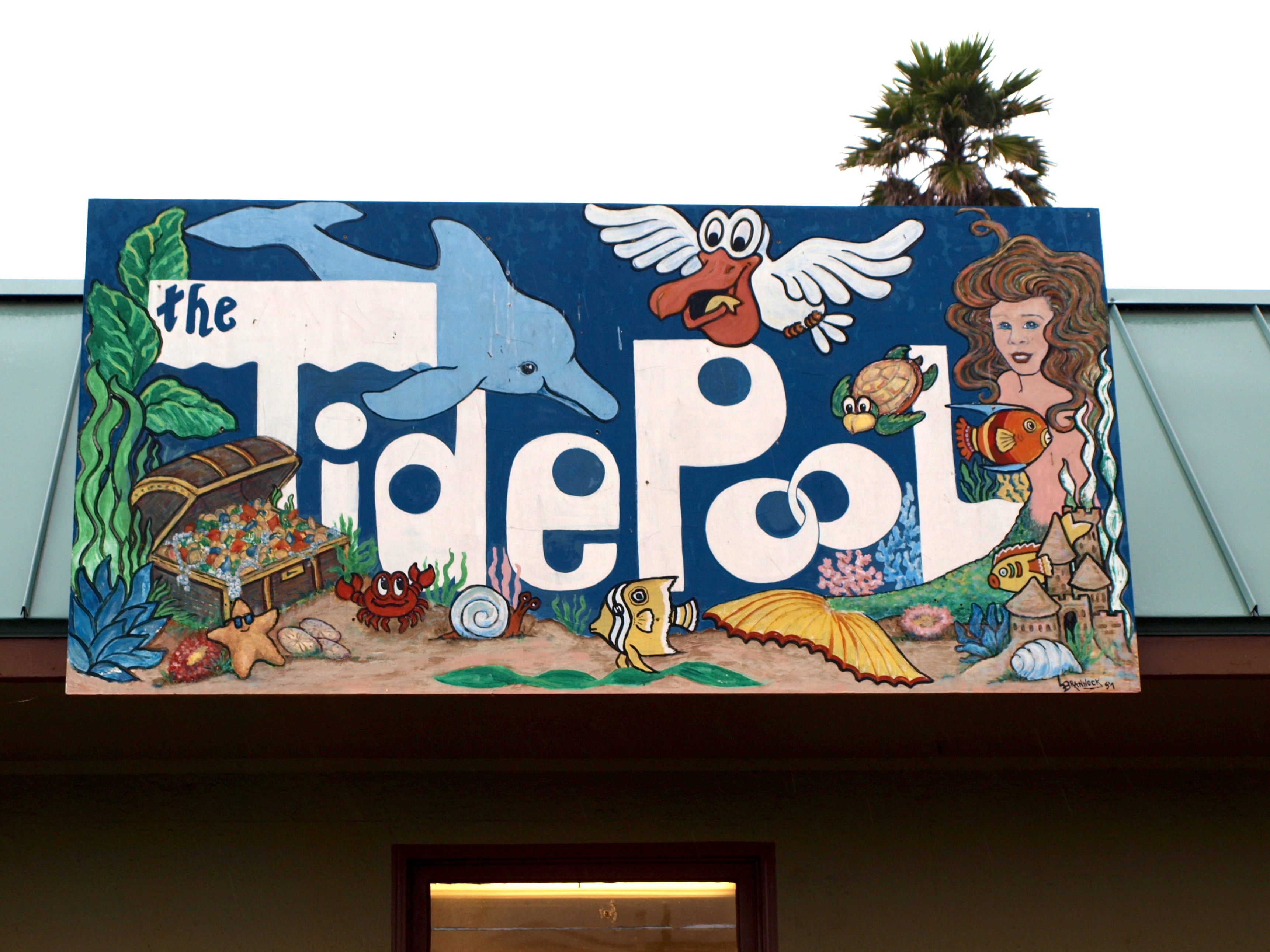
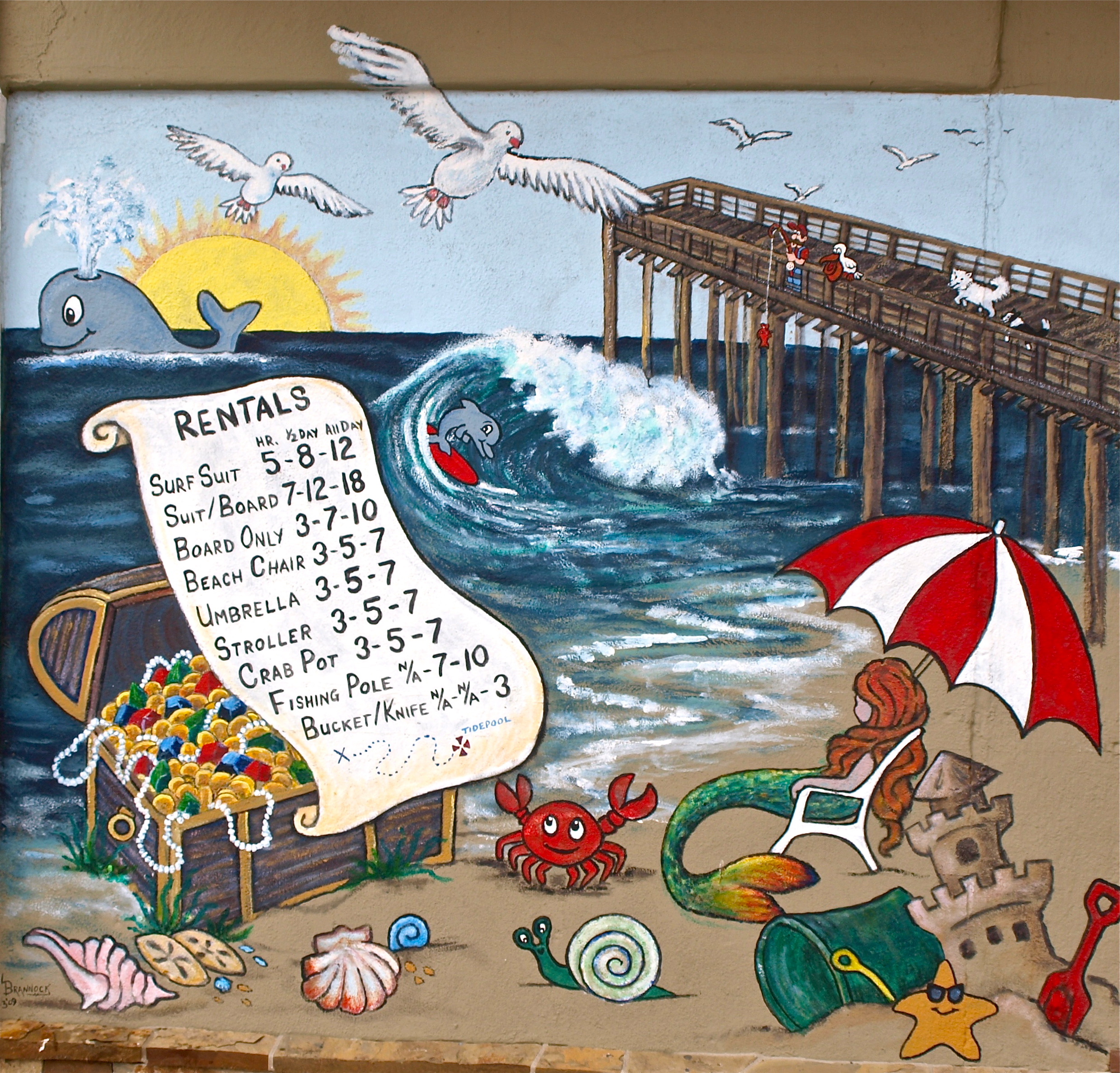
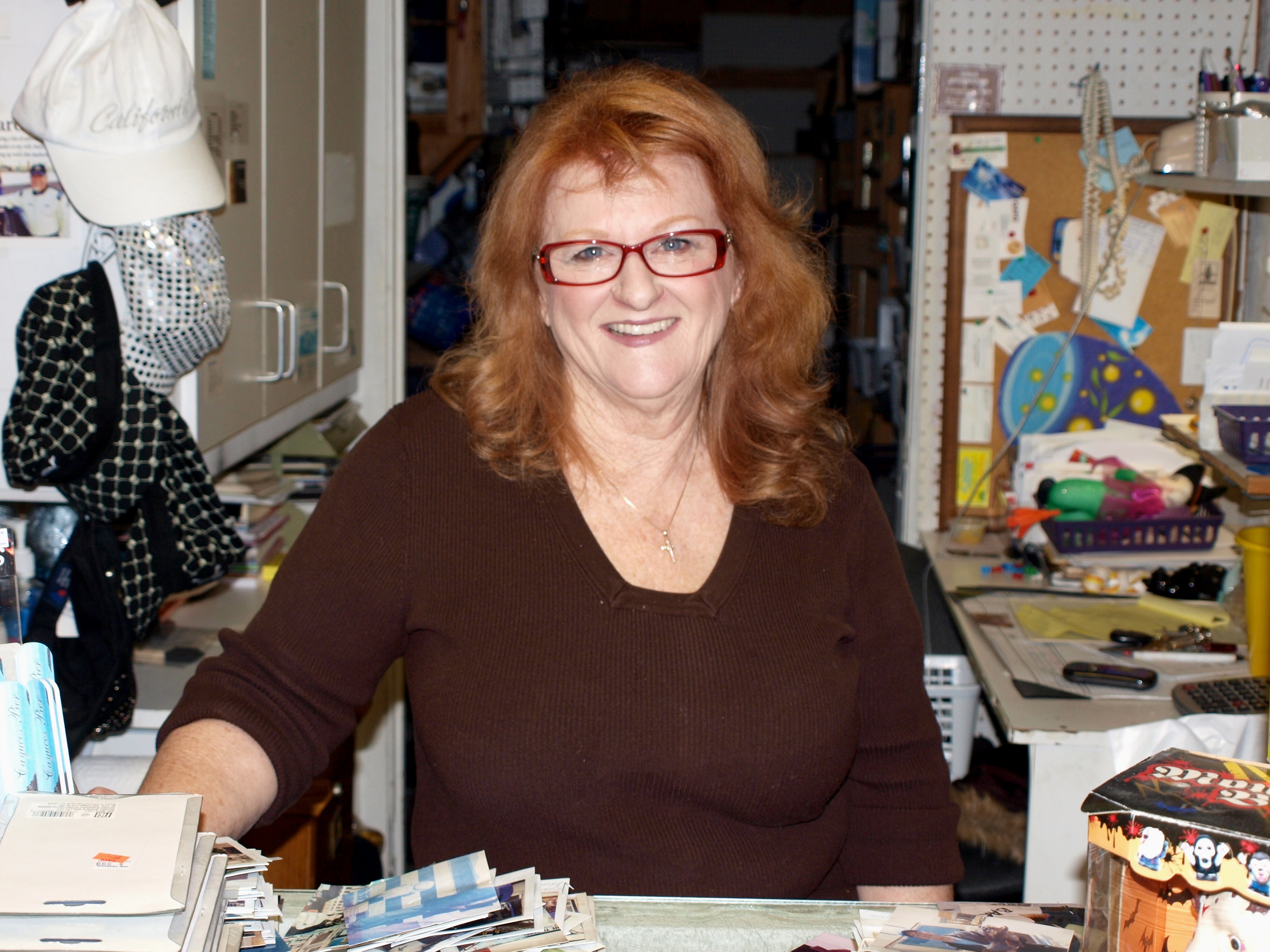
Glenda
<*}}}}}}}}}>< — Cayucos Beach, adjacent to the pier, is the northernmost beach in California with grunion runs. If you’re staying in the area during the appropriate times (nighttime high tides which occur during the spring and summer, and which follow the first three to four nights after the full and the dark of the moon), go down to the beach and see if you can catch some of the elusive smelt with your hands. And no, they really are not the ocean equivalent of snipe, they’re just little sex-crazed fish that have a thing for the beach.
<*}}}}}}}}}>< — For years a local sight was Snowflake, a harbor seal that seemed to have adopted the pier (or at least the water around the pier) as his residence. He was a popular attraction for tourists and truth be told most anglers also looked forward to Snowflake sticking his speckled head up above the water as though checking out the action on the pier.
Of course he wasn’t always welcome (for example, when he infrequently decided to steal a fish from an angler’s line). When the anglers decided they had enough of Snowflake for the day they would shake a yellow towel at him. That was the signal for him to leave the area. Sounds like a story that an expatriate from Pittsburgh might have invented—you know, all those Pittsburgh Steeler fans waving their yellow “terrible towels.” But I haven’t seen Snowflake in my last few trips to the pier. Hope he simply found a new love and vacated the premises for some better digs.
<*}}}}}}}}}>< — Almost all piers see fish from time to time that are uncommon or even rare. Such was the case with the catch of a poacher, probably a warty poacher, in 2007.
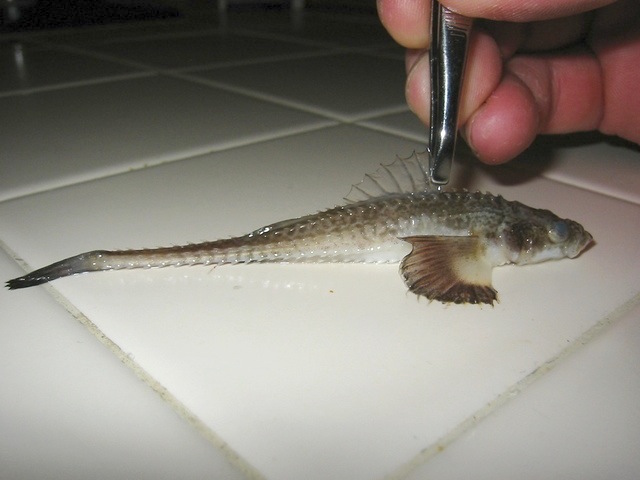
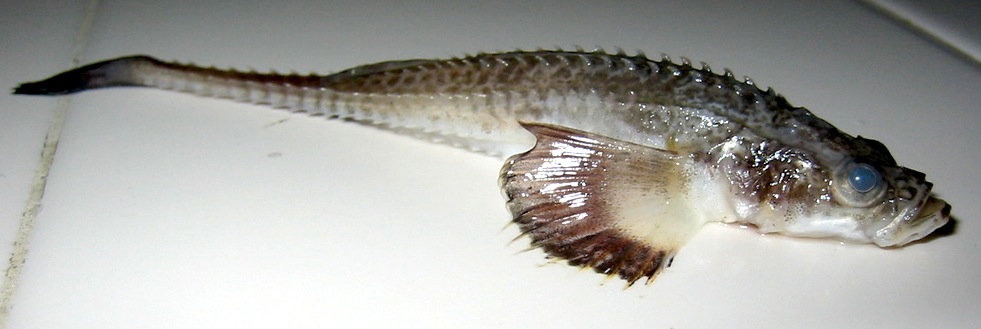
<*}}}}}}}}}>< — One of my favorite visits to the pier was a less than stellar (fish wise) visit in July of 2008. Having heard that the pier was yielding up sardines for bait, and numerous sharks (dogfish) for sport, I made an early morning visit to the pier. Unfortunately, for me, most of the shark action was occurring during the nocturnal, midnight to three hours, and I would fail to catch a shark on this visit. But there had been action as evidenced by the odor at the end of the pier: an effluvium connoting death. Dried blood from the previous night’s shark fest splotched the surface of the pier while blood, guts, and squid slime coated the top of the rails.
To make matters even worse, I failed in my mission to replenish my bait cooler with sardines. The sardines were there, but 300-400 yards out from the pier. That was where several pods of dolphin, hundreds of cormorants, and several phalanx of pelicans were attacking shoals of unseen fish. Most impressive were the pelicans that were doing their dive bomb routines almost straight down into the water after their prey. Each splash of the big birds would elicit comment from the tourists watching nature’s show and it was indeed a pretty impressive display. Numerous seals were also in attendance but the dolphins and pterodactyl-imitating pelicans stole the show. The spectacle lasted for the nearly three hour time I was there and became one of those just wish moments… as in just wish I had a movie camera with me.
Luckily, the anodyne scene served as a soothing balm for the somewhat desultory catch that I recorded, one made up mainly of small spotfin surfperch, mid-sized jack mackerel, and a lone giant jacksmelt (one of the largest I have ever seen).
<*}}}}}}}}}>< — I’ve heard some anglers call the town Yucos and thought they simply were shortening the town’s name. But, I’ve only heard the pseudonym used when the fishing was—yucky. Just wondering… is it only a fisherman thing?
<*}}}}}}}}}>< — Although Cayucos has long prided itself on its small town charm and atmosphere, its California-style joie de vivre and beach-town Weltanschauung carry a price. Rare is the home that is any longer affordable for the average citizen. To make matters worse, Cayucos has been discovered. When a national magazine, in this case Men’s Journal, can rate it as one of its 25 favorite “hideouts and secret spots,” it no longer qualifies as a hideout or as a secret spot.
<*}}}}}}}}}>< — I’ve had the pleasure of being at the grand opening or reopening of three piers and the one for the Cayucos Pier was the most recent taking place on October 31, 2015.
In 2013 the pier had been closed…
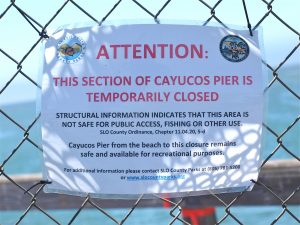
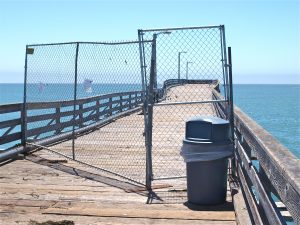
Luckily Cayucos is a town that loves its pier and it refused to give up in the long process needed to find funds and to rebuild the pier…
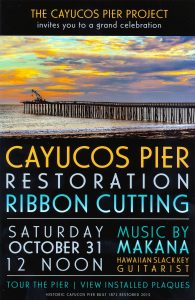
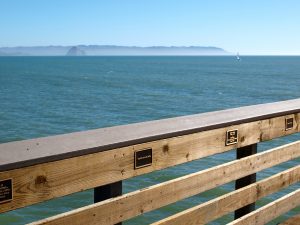
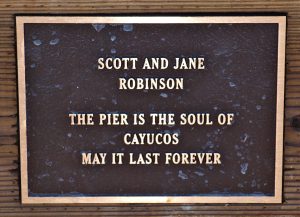
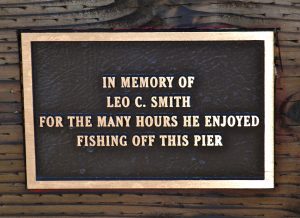
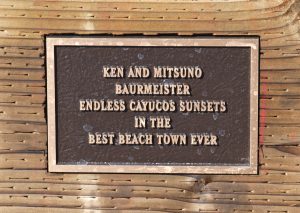
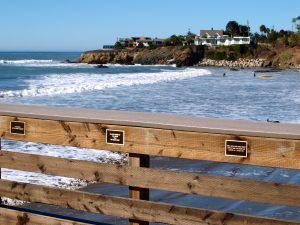
The Grand Opening!
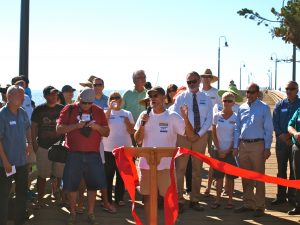
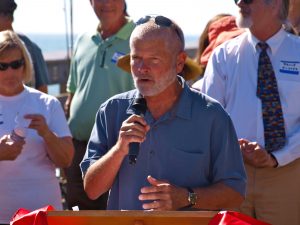
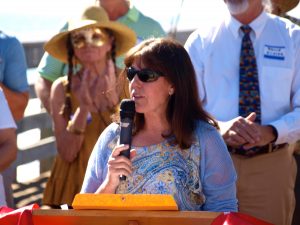
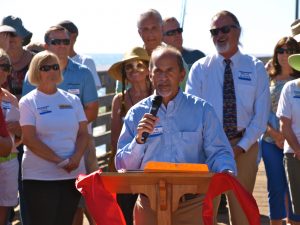
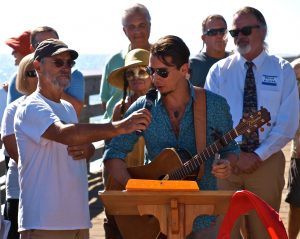
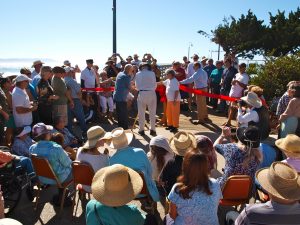
Of course there were many who cared little for the festivities, they simply wanted to stroll the new pier — or to fish. And, I made sure I got in a few hours of fishing after the hub bub died down (with little success).
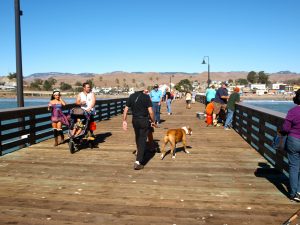
Strollers on the pier —
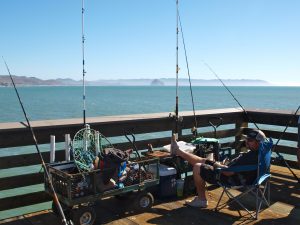
Fishermen —
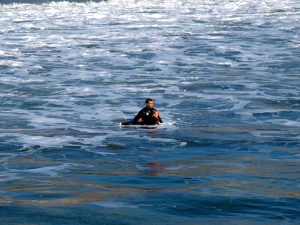
Surfers —
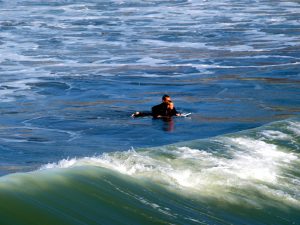
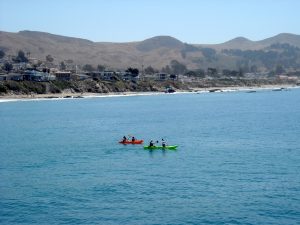
And Kayakers — it was truly a happy day for all!
History Note. The name Cayucos (pronounced Ki-YOO-cos) apparently derives from the Spanish word cayuco, which means a fishing canoe. It was a Spanish rendering of the Eskimo word kayak and apparently referred to the bidarkas of the Aleuts who were employed in hunting sea otter along the California coast.
Much of the history of the wharf at Cayucos traces back to Captain James Cass, an English-born sailor who had come to San Francisco in search of gold but who settled in the area in 1867 on part of a Spanish land grant called Rancho Moro y Cayucos. Although he had claimed 360 acres of government land, he quickly discovered that he had little interest in farming. Instead he started a lighting business employing small boats to transport goods (and people) from the coastal steamers through the surf onto the shore.
The lighters however were always inefficient and at risk due to an unpredictable sea. Cass soon partnered with Captain John Ingalls to construct a 380-foot wharf in 1870. The wharf, generally known as Cass’ Landing, allowed Cayucos to become the shipping center for dairy farms that shipped their dairy products (milk, butter and cheese) to Los Angeles and San Francisco. The wharf was an improvement but was still too short to allow coastal shipping vessels to anchor.
Next up was a partnership between Cass, John Harford, William Beebe, and L. Schwartz, all of whom were involved with the wharves at Avila and Port Harford (Port San Luis). The partners, operating under the name of J. Cass and Co., spent $15,000 to enlarge the wharf, build a large warehouse, and construct offices for the steamship and telegraph companies. The construction started in 1874 with the now deep-water, 940-foot-long wharf opening in 1875, the same year the town of Cayucos was laid out and named.
The wharf quickly became a regular stop for ships of the Pacific Steamship Company and the wharf and warehouse became the center of commercial activity for the new town. The wharf was also a transportation outlet for locals (the alternative being the local stage coach) and was a vital link between Los Angeles and San Francisco. It would retain its important status until the new century when competition from new modes of transportation—trucks and cars—would end the need for a commercial wharf at Cayucos.
Nevertheless, the wharf would continue to see use into the 1930s, although much of its use by then was for commercial fishing boats.
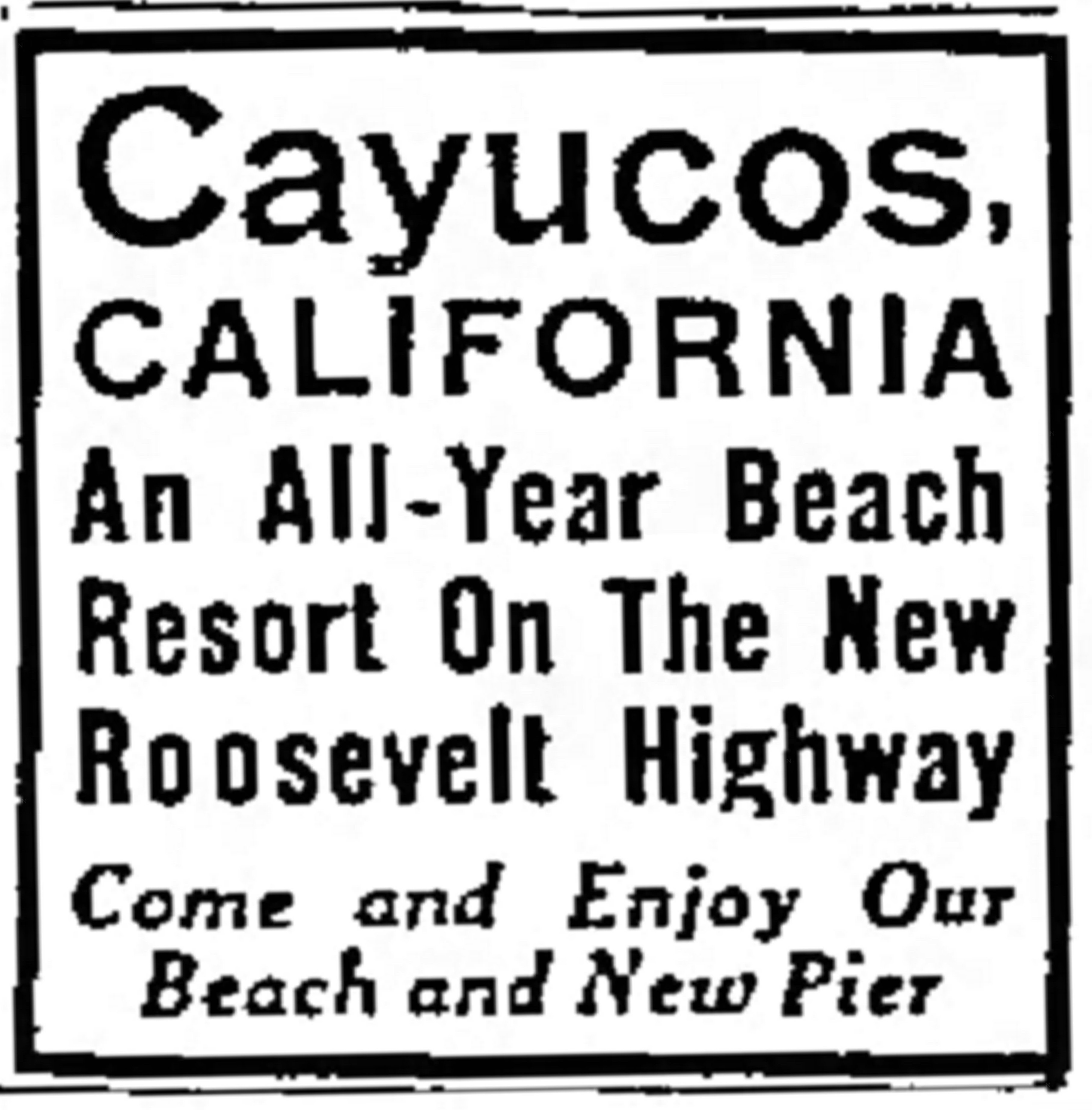
Advertisement in Fresno Bee & Republican — July 19, 1935
A Fish and Game bulletin in 1953 recorded: “The coast of San Luis Obispo County was famous for its abalones and a colony of Japanese dried them at Cayucos till 1915 when a state law prohibited drying. A fish cannery near the base of the pier opened in 1916 for the canning of sardines and abalones although there had been some canning of abalone here as early as 1905. The plant closed in 1920 chiefly because of the rough water at this unprotected pier. Fishing boats could unload only in fair weather and could find shelter only at Morro Bay. Now there are no facilities for handling commercial fish other than the pier as a fair-weather landing spot. The fish landings at Cayucos have averaged 12,000 pounds per year for the past 20 years. The species have been abalone, rockfish, smelt, and lingcod. Two or three small boats have had headquarters here but abalone diving has been the chief activity.”
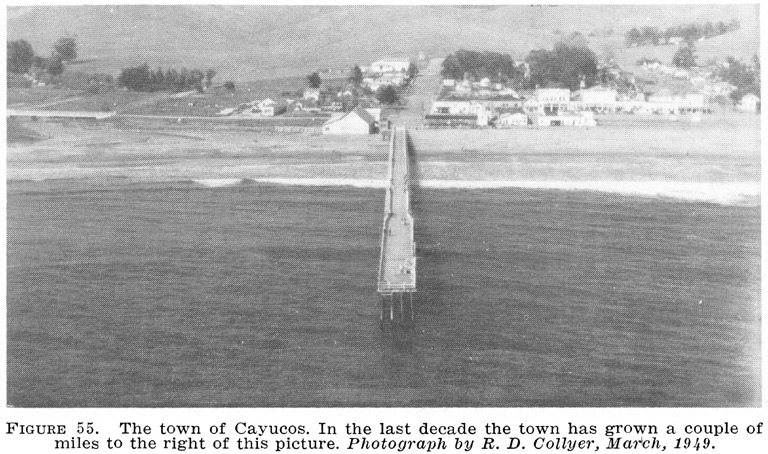
That same report indicated that there were four party boats operating from the pier in 1952 and that the pier was heavily used by anglers.
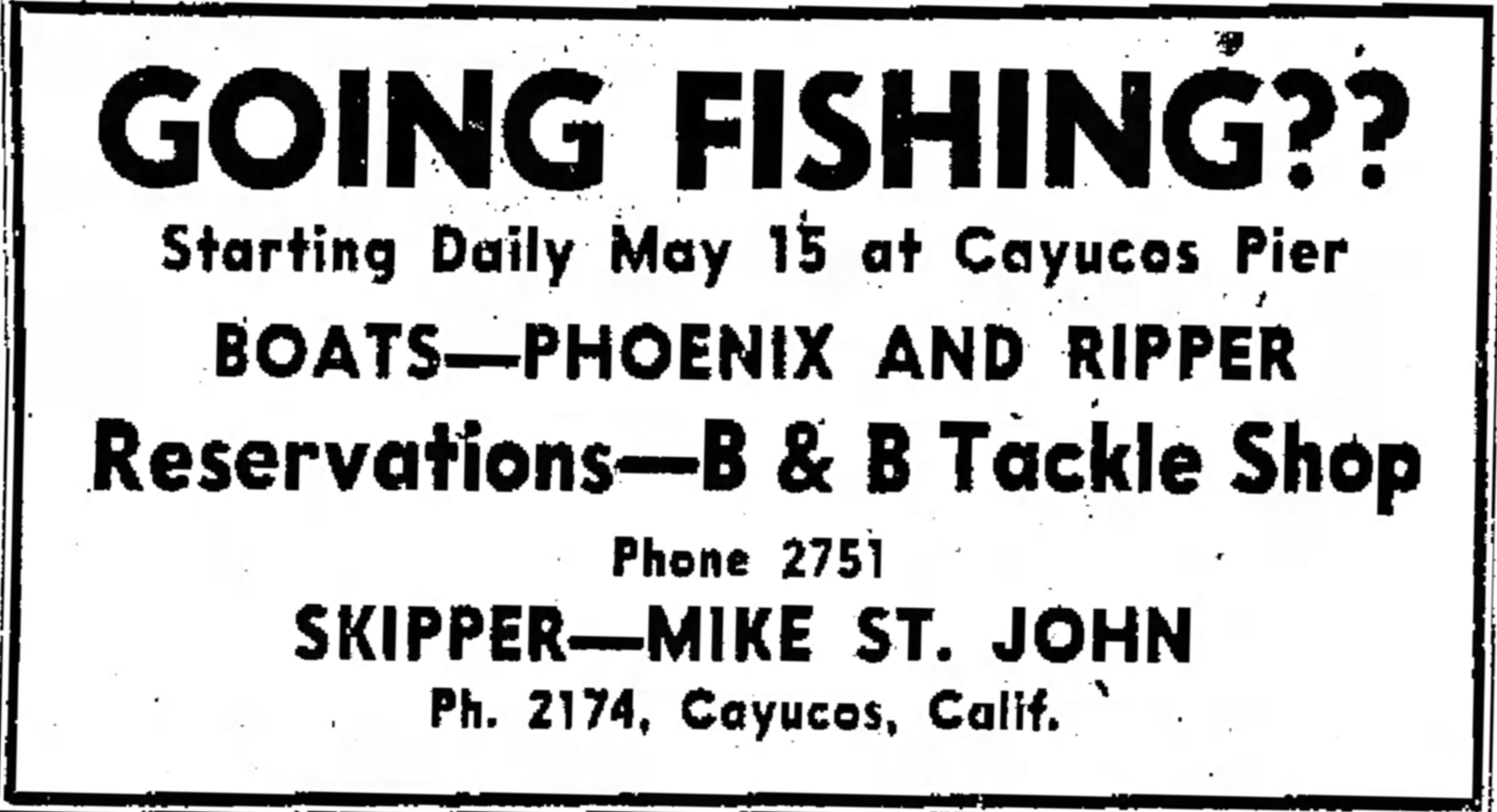
Advertisement in Fresno Bee & Republican — May 20, 1953
Deep-Sea Fishing on Boats Lucky Strike and Lucky Day
Leaves Cayucos Pier at 7 A.M. Daily
Contact—Al’s Cafe and Sporting Goods — Cayucos — Phone 4121 or 2596
Advertisement in Bakersfield Californian, July 13, 1956
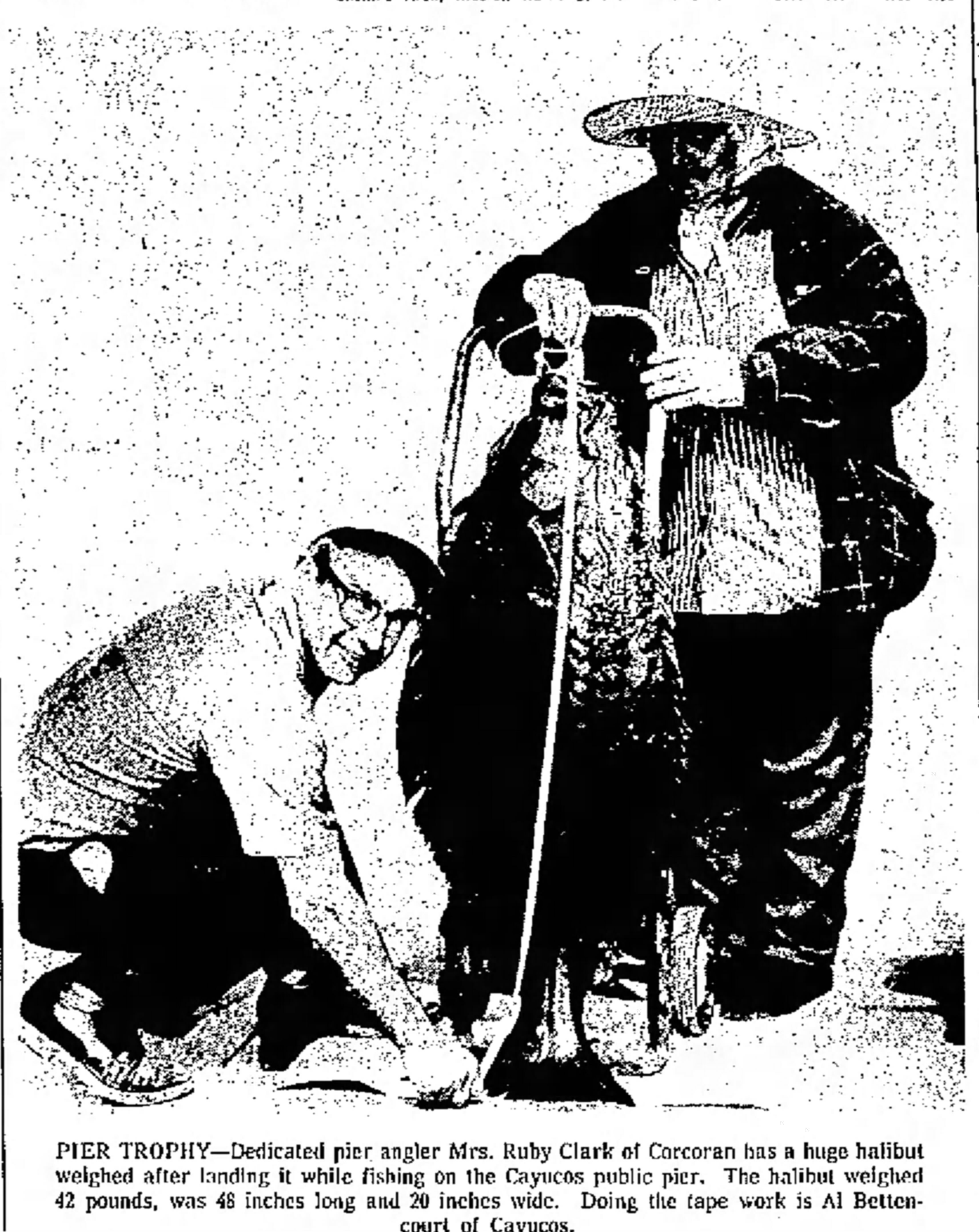
From Fresno Bee & Republican, July 18, 1968
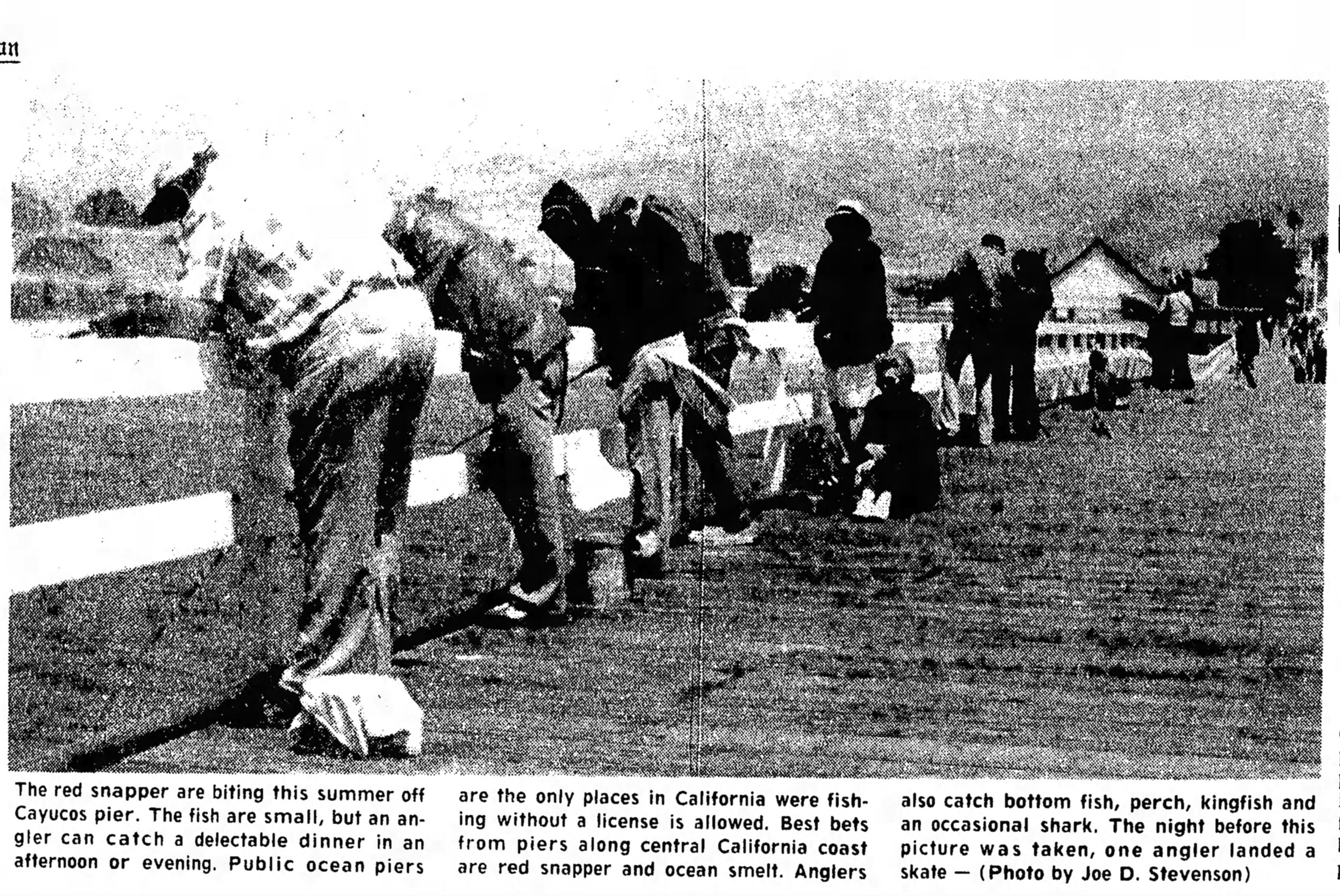
From Bakersfield Californian, August 26, 1977
Of course damage to the wharf, like most coastal wharves and piers, is always a threat. Winter storms and their damaging waves are usually the culprit, although at least two tidal waves also tore into the wharf/pier. Damage from tsunamis (tidal waves) was recorded at Cayucos on November 22, 1878 (from a Southern California earthquake) and March 28, 1964 (from the Alaska earthquake). The El Niño storms of 1983 included Cayucos as a victim requiring an infusion of $80,000 from FEMA to fix the pier.
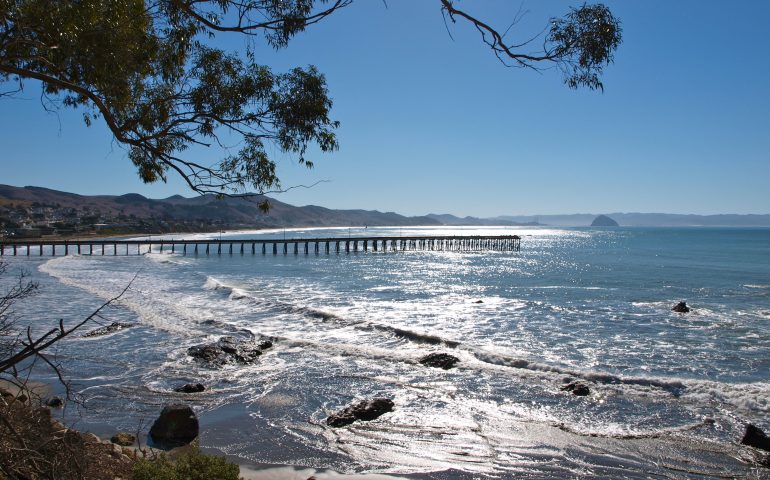
I see these are some older posts good tips but how is the fishing now for perch and Halibuts
Can’t really say since we no longer have a reporter for that pier.
Was at Cayucos, pier yestetday fishing, caught the smallest bull head in my life. Bunch of jack smelt. Nothing big or interesting.
How is it this year? I would like to take my son and hopefully he’ll catch some smaller fish since we don’t have large tackle.
Sorry but I have not been able to get recent reports from the pier. As a general rule there are always some smaller fish such as white croaker (kingfish) and small sanddab available. Just use size 6-8 hooks and a small piece of bait sized for the hook.
My husband just caught a big shark on small tackle! Your son will have fun we caught a bunch of fish, recently. The shark was too big to pull up on the pier as we were not prepared to catch something big
We have been fishing on the pier the last couple weeks.
Caught a bunch of Jacksmelt and white croaker during the day, not huge but still fun. At night we caught a bunch of white croaker, on the smaller side, a bunch of tiny sculpin (I think that’s how you spell it.
July 17th 2021 we went night fishing and my husband caught a blue shark! About 4/5 feet, could not pull it out of the water, it was too big his line snapped. Also watched a guy a few weeks back, we watched a guy catch a huge guitar shark. All caught on squid.
Long story short, everytime we go the fish are biting and it’s fun. Recommend going!
[…] For more about Cayucos Pier check out https://www.pierfishing.com/cayucos-pier/ […]